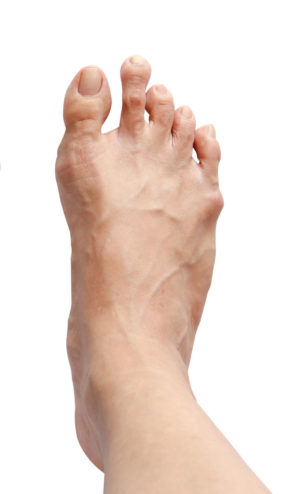 Have you recently noticed that you have developed a mild to moderate bump on the outside of your foot near the base of your pinky toe? Even if it’s not painful, you may be wondering what’s going on, and moreover, if there is any cause for concern. What you’re dealing with is likely the beginning stages of what’s known as a bunionette, or a tailor’s bunion. Below, we take a closer look at these formations and explain what you should do if you notice a growing bump near the side of your pinky toe joint.
Have you recently noticed that you have developed a mild to moderate bump on the outside of your foot near the base of your pinky toe? Even if it’s not painful, you may be wondering what’s going on, and moreover, if there is any cause for concern. What you’re dealing with is likely the beginning stages of what’s known as a bunionette, or a tailor’s bunion. Below, we take a closer look at these formations and explain what you should do if you notice a growing bump near the side of your pinky toe joint.
What Is A Tailor’s Bunion?
A tailor’s bunion gets its name from the fact that the condition tended to be more common among tailors. Due to the seated position they’d often take when working on shoes, tailors were more prone to putting extra pressure on the outsides of their feet. Over time, this pressure could lead to a malformation of the small joint at the base of their pinky toe.
And while you may be thinking that you’re immune to the issue because you’re not a tailor, the mechanism of injury is becoming more common in today’s society where fashion oftentimes trumps function when it comes to footwear. If you wear shoes that are overly tight for an extended period of time, your shoes may be putting excess pressure on the sides of your feet. This can commonly lead to the formation of a traditional bunion on the joint at the base of your big toe, but it can also lead to the onset of a bunionette. Tight athletic shoes, high heels, dress shoes or anything with a narrow toe box can all slowly help to push the joints in your toes out of normal alignment.
Bunionettes tend to be less symptomatic than bunions, simply because of the size of the joints and the forces at play when we walk, but not always. However, it’s important to realize that both bunions and bunionettes require attention even if they are not causing symptoms. That’s because left untreated, the joint malformation will only worsen. This is problematic for two main reasons.
The first is that symptoms will only get worse. Even if you’re not experiencing symptoms now, if you keep doing the same things and the joint dysfunction progresses, symptoms will slowly start to develop. If you are experiencing mild symptoms, they’ll only become more severe as time goes on. The second reason why ignoring a bunionette is problematic is because the problem only gets harder to effectively treat as the condition worsens. What once may have been alleviated with footwear changes and some toe padding may now require more invasive options. Since a malformed joint will not shift back into the correct location on its own, oftentimes this means that joints that are still painful despite non-operative treatment will eventually require surgery. Don’t let it get to this point.
Instead, set up an appointment with a foot specialist like Dr. Silverman. Treatment is oftentimes very simple if caught early enough, and while you may not be able to remove the bump with conservative treatments, these techniques can reduce or eliminate symptoms while also stopping continued joint shifting. Many people with bunionettes don’t end up needing surgery, but it becomes a distinct possibility if you ignore the problem for too long.